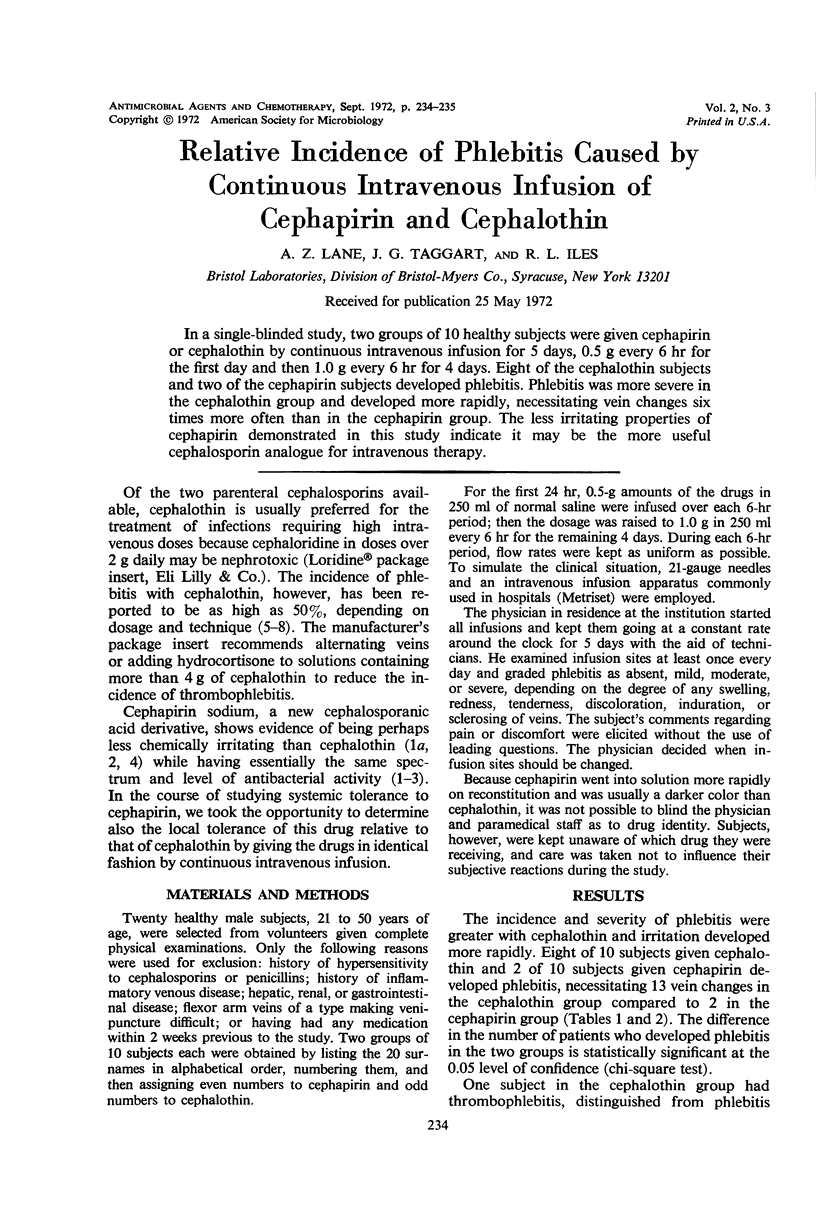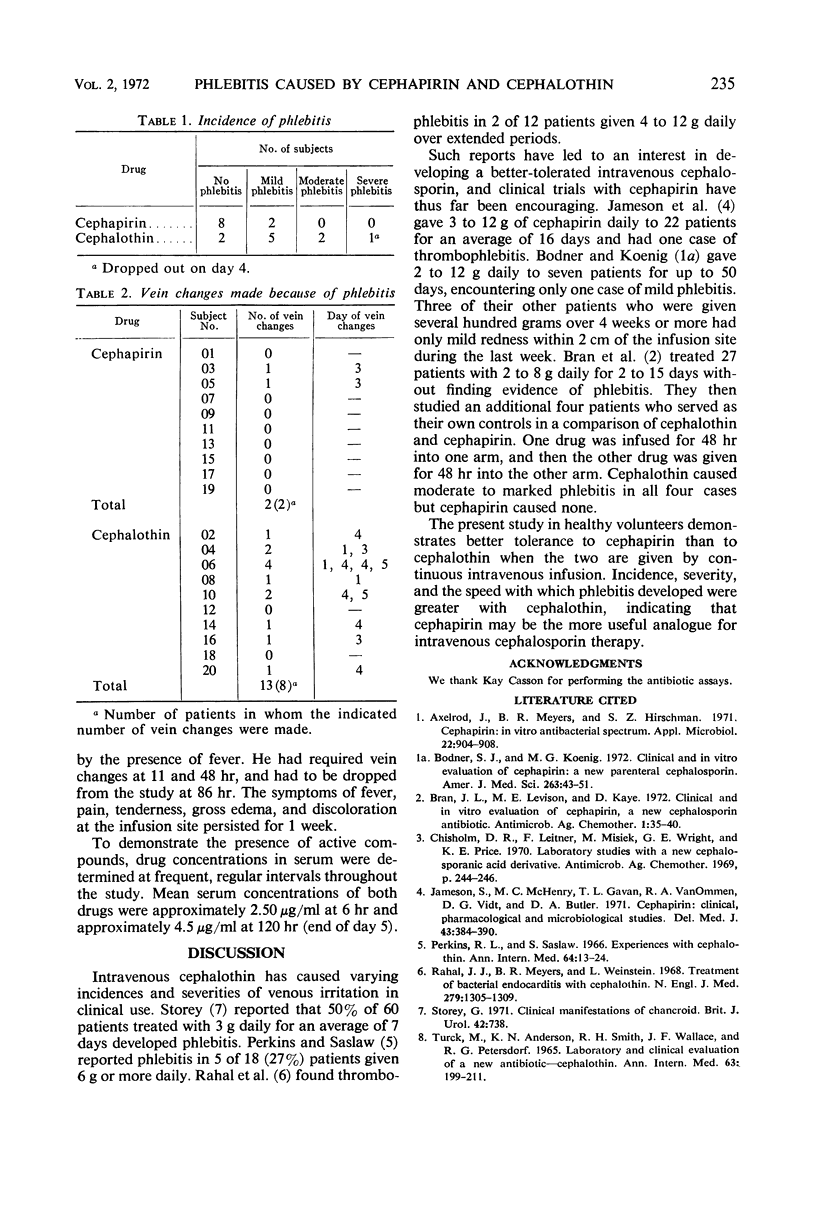Abstract
In a single-blinded study, two groups of 10 healthy subjects were given cephapirin or cephalothin by continuous intravenous infusion for 5 days, 0.5 g every 6 hr for the first day and then 1.0 g every 6 hr for 4 days. Eight of the cephalothin subjects and two of the cephapirin subjects developed phlebitis. Phlebitis was more severe in the cephalothin group and developed more rapidly, necessitating vein changes six times more often than in the cephapirin group. The less irritating properties of cephapirin demonstrated in this study indicate it may be the more useful cephalosporin analogue for intravenous therapy.
Full text
PDF

Selected References
These references are in PubMed. This may not be the complete list of references from this article.
- Axelrod J., Meyers B. R., Hirschman S. Z. Cephapirin: in vitro antibacterial spectrum. Appl Microbiol. 1971 Nov;22(5):904–908. doi: 10.1128/am.22.5.904-908.1971. [DOI] [PMC free article] [PubMed] [Google Scholar]
- Bodner S. J., Koenig M. G. Clinical and in vitro evaluation of cephapirin: a new parenteral cephalosporin. Am J Med Sci. 1972 Jan;263(1):43–51. doi: 10.1097/00000441-197201000-00007. [DOI] [PubMed] [Google Scholar]
- Bran J. L., Levison M. E., Kaye D. Clinical and in vitro evaluation of cephapirin, a new cephalosporin antibiotic. Antimicrob Agents Chemother. 1972 Jan;1(1):35–40. doi: 10.1128/aac.1.1.35. [DOI] [PMC free article] [PubMed] [Google Scholar]
- Chisholm D. R., Leitner F., Misiek M., Wright G. E., Price K. E. Laboratory studies with a new cephalosporanic acid derivative. Antimicrob Agents Chemother (Bethesda) 1969;9:244–246. [PubMed] [Google Scholar]
- Jameson S., McHenry M. C., VanOmmen R. A., Gavan T. L., Vidt D. G., Butler D. A. Cephapirin: clinical, pharmacological, and microbiological studies. Del Med J. 1971 Nov;43(11):384–390. [PubMed] [Google Scholar]
- Perkins R. L., Saslaw S. Experiences with cephalothin. Ann Intern Med. 1966 Jan;64(1):13–24. doi: 10.7326/0003-4819-64-1-13. [DOI] [PubMed] [Google Scholar]
- Rahal J. J., Jr, Meyers B. R., Weinstein L. Treatment of bacterial endocarditis with cephalothin. N Engl J Med. 1968 Dec 12;279(24):1305–1309. doi: 10.1056/NEJM196812122792403. [DOI] [PubMed] [Google Scholar]
- Storey G. Clinical manifestations of chancroid. Br J Urol. 1970 Dec;42(6):738–738. [PubMed] [Google Scholar]
- TURCK M., ANDERSON K. N., SMITH R. H., WALLACE J. F., PETERSDORF R. G. LABORATORY AND CLINICAL EVALUATION OF A NEW ANTIBIOTIC--CEPHALOTHIN. Ann Intern Med. 1965 Aug;63:199–211. doi: 10.7326/0003-4819-63-2-199. [DOI] [PubMed] [Google Scholar]


